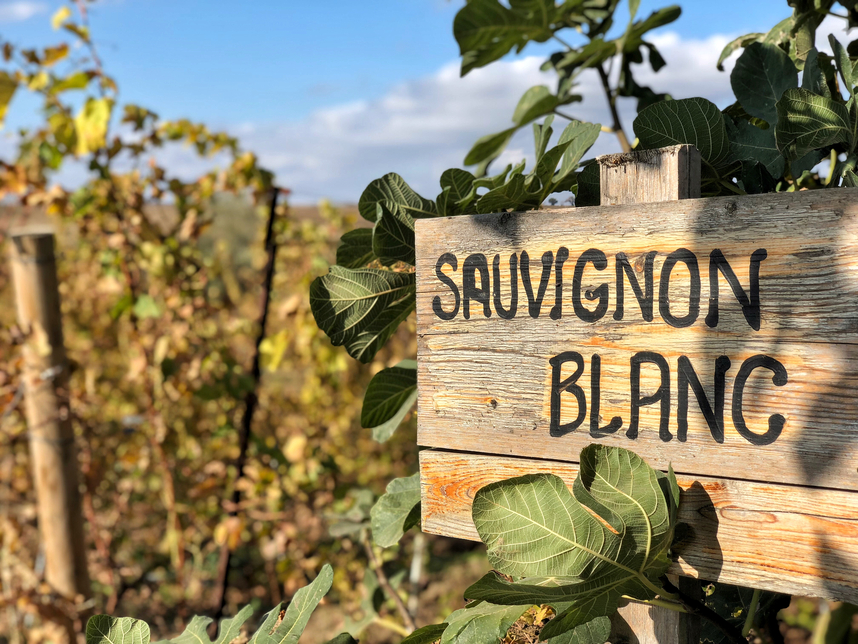When talking about international grapes, the name Sauvignon Blanc somehow always comes up. And it is impossible for it not to, since it is one of the most widespread and celebrated white grape varieties in the world.
The credit for this supremacy goes to its intense and distinctive organoleptic notes, at times pungent, which enthusiasts and experts recognise at first taste. Although it originated in France and found a particularly favourable territory here, Sauvignon has also spread massively beyond national borders, landing in Italy, where it has taken on specific nuances.
Between characteristics and pairings, here is the excellent Italian expression of Sauvignon Blanc!
From France to the Peninsula: the history and spread of Sauvignon Blanc
Whoever says Sauvignon Blanc often also says France, giving rise to what is an automatic, almost instinctive mental connection. The reason is simple: it is here - perhaps in the Loire Valley or perhaps in Bordeaux - that this product was first vinified.
Its name means 'wild vineyard', perhaps because the plant grew luxuriantly even without human help or because its characteristics were reminiscent of those of the wild vine. Soon, however, local growers realised that the vine could be put to good use to produce a remarkable semi-aromatic wine with a medium-low alcohol content.
With its tendentially cold climates and soils rich in gravel and chalk, the French areas that first welcomed this plant also offered it the perfect terroir to thrive. The ripening of the grapes was slowed down by the low temperatures of the Loire and Bordeaux, a characteristic that helped create the perfect balance between the acid and sugar components within the grapes.
Although the grape variety has also found a home in New Zealand, Australia, California, Chile and South Africa - areas that are anything but cold - it was precisely this predilection for cool climates that allowed Sauvignon to spread to northern Italy over the centuries. The largest Italian regions producing Sauvignon Blanc are in fact Trentino-Alto Adige and Friuli-Venezia Giulia.
The Sauvignon Blanc grape variety in Italy: production zones and characteristics
Some declinations of Sauvignon Blanc can also be found in Tuscany, the Marches and Sicily, but the climatic and geological characteristics of northern Italy mean that it is between Trentino-Alto Adige and Friuli that the best-known and most relevant examples of this wine are to be found.
The characteristics of Sauvignon Blanc in this area can vary from cellar to cellar and especially from one production area to another, but in general, one can identify traits that different labels have in common.
Defined as crisp, because of the sensation of freshness that lingers on the palate during tasting, Italian Sauvignon Blanc wines focus on the intensity of their aromas and flavours to win the consumer over. Tickling the nose are hints of fresh fruit, among which specific nuances can be distinguished according to place of origin. On tasting, this wine is harmonious and savoury, with a hint of minerality and acidity that tickles the palate and enlivens the experience.
The first of the characteristics of Sauvignon Blanc can be found in Trentino-Alto Adige, a region that could be described as a veteran in the production of aromatic wines, first and foremost Gewürztraminer. Here, Sauvignon benefits from the limestone-clay soils and moderate altitudes (around 600 m above sea level), as well as the predominantly mountainous climate that characterises this area.
Although there are considerable differences from area to area, these traits tend to give the wine considerable aromatic intensity, as well as a variety of aromas ranging from citrus to white-fleshed fruit, even touching on herbaceous notes. The regional Sauvignon - well represented, to give an example, by a 2019 'Bisù' Sauvignon Trentino DOC - is mineral and complex, with good acidity due to the cool climate and altitude of the vineyards.
The perfect Italian terroir for Sauvignon Blanc also includes Friuli Venezia Giulia, a region with a vocation for the production of excellent Italian white wines (just think of Ribolla Gialla), but which sees the Collio area in particular as fertile ground for the local version of this wine.
The credit for this goes to the soils of varying composition - calcareous, clayey and sandy - to the continental climate - made up of summers that tend to be hot and not very rainy, and cold winters - and to the good altitude, characteristics that give life to a fresh product with character, with decisive and lively aromas of citrus and exotic fruit, but also irresistible spicy notes. Not forgetting, of course, the unfailing minerality of the product.
Less frequent but nevertheless worthy of mention are the versions of Sauvignon Blanc produced in central and southern Italy, where the higher average temperatures and proximity to the sea give this wine unique nuances. The result of vinification in these areas is a product with warm, persuasive tones, less accentuated acidity and typically Mediterranean herbaceous notes.
The best combinations of food and Sauvignon Blanc

In its many fascinating regional variations, Italian Sauvignon Blanc is an excellent choice to bring to the table, especially when the menu includes fish dishes. The aromatic notes of Sauvignon Blanc and its mineral hints lend a fresh touch to shellfish and fish varieties characterised by a certain savouriness, as well as to first courses made with seafood ingredients.
Combinations with Sauvignon Blanc can be varied, however, thanks to the great versatility of this product. Lovers of vegetables and vegetarian cuisine will fully enjoy the combination of this wine with vegetable-based main courses, while as far as meat is concerned, Sauvignon is more at ease with more delicate white meats.
Green light also goes to Sauvignon Blanc in combination with fresh cheeses as well as spicy and piquant recipes, both those of the Italian gastronomic tradition and more exotic ones, while the wine's ability to accompany fruit-based desserts such as cakes and tarts should not be overlooked.
Now that you know the characteristics of Italian-style Sauvignon Blanc, all you have to do is taste it. Discover the best bottles on Svinando!

